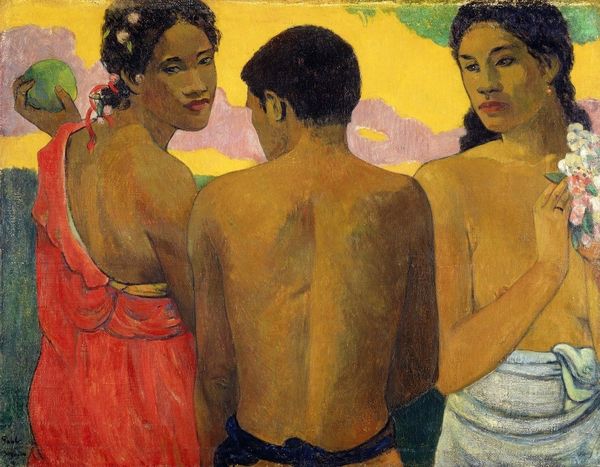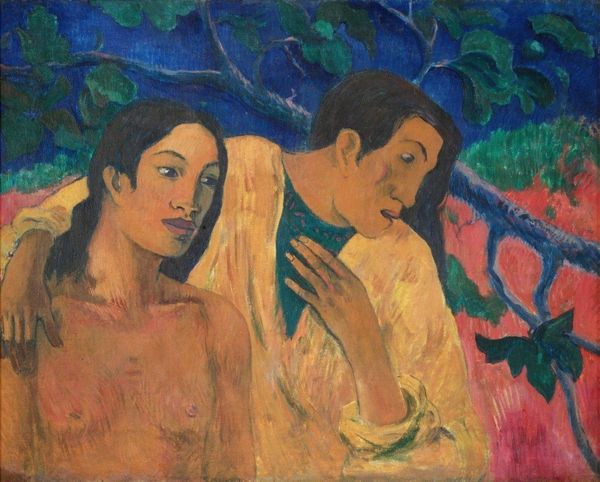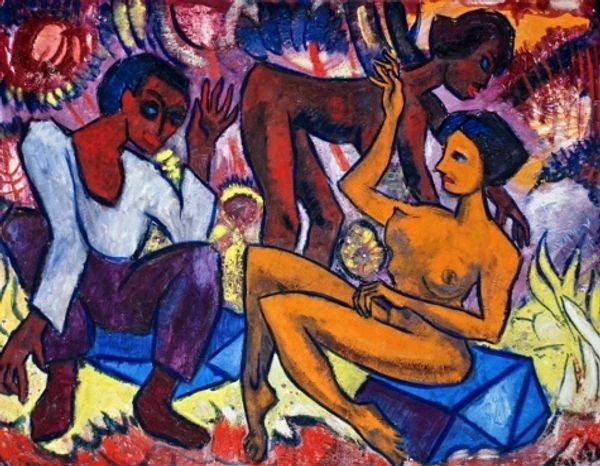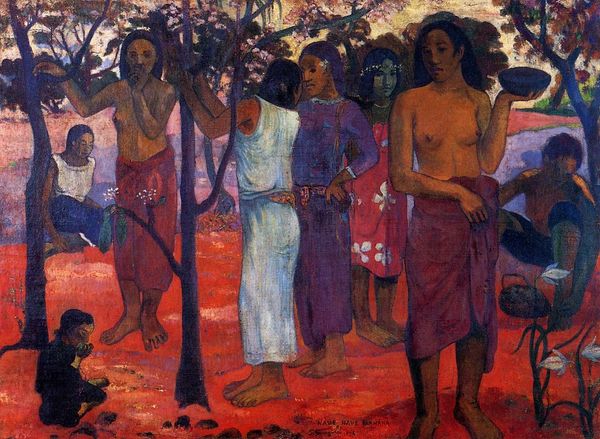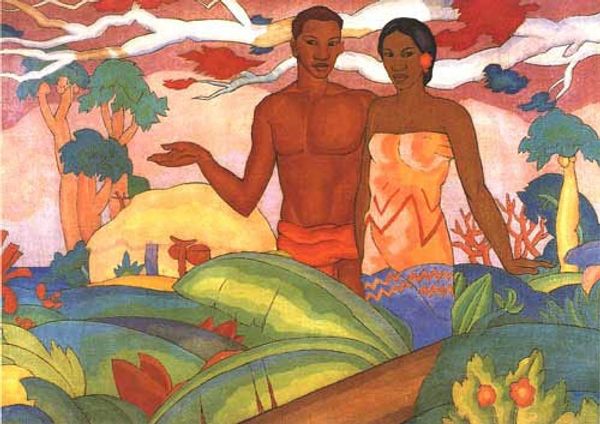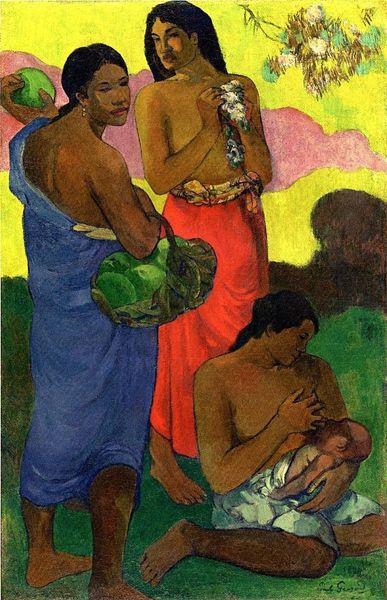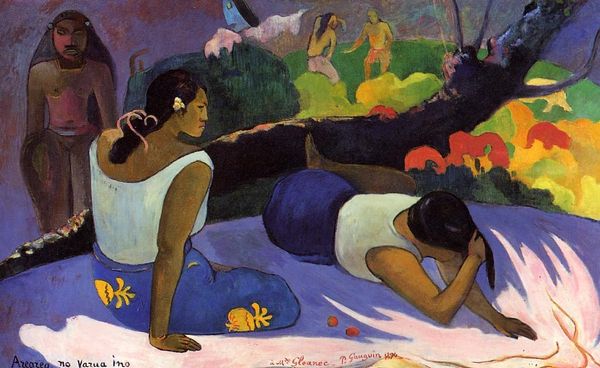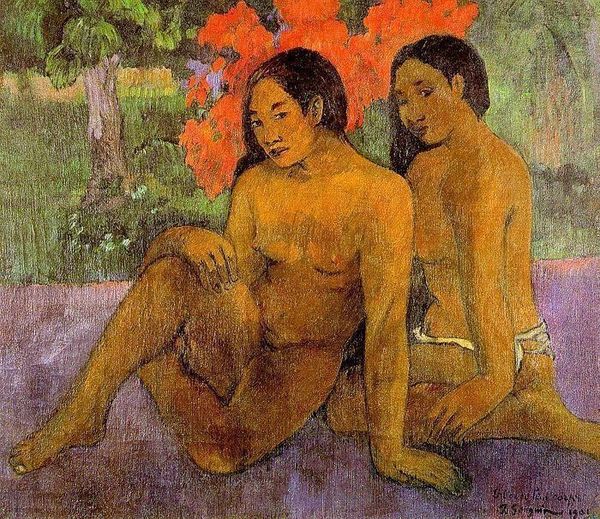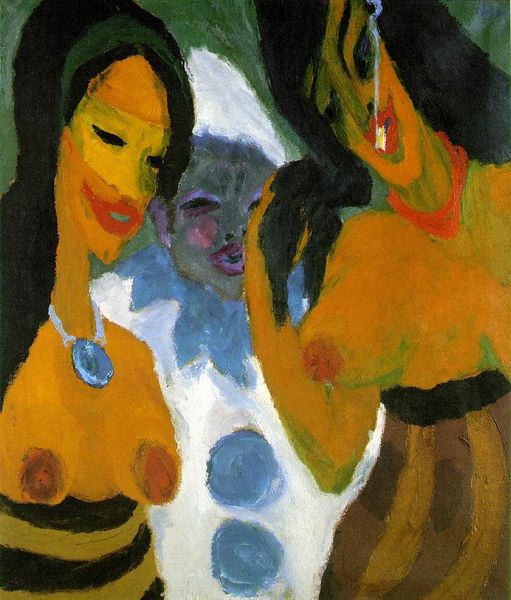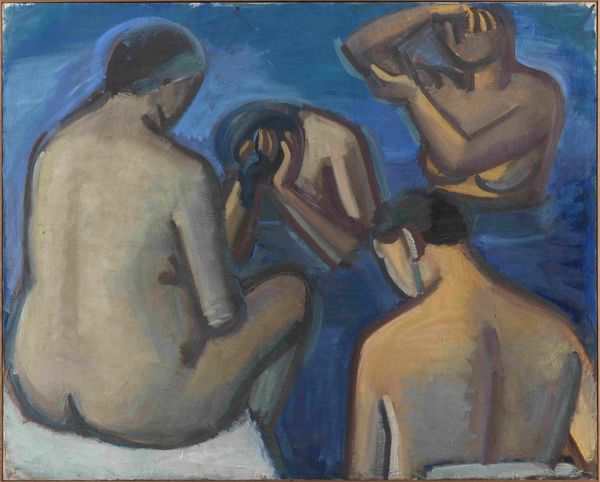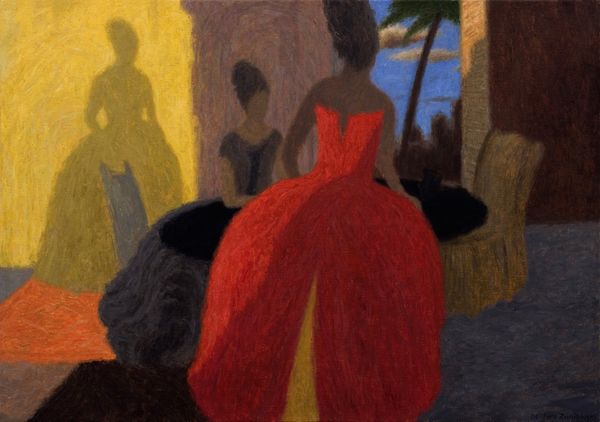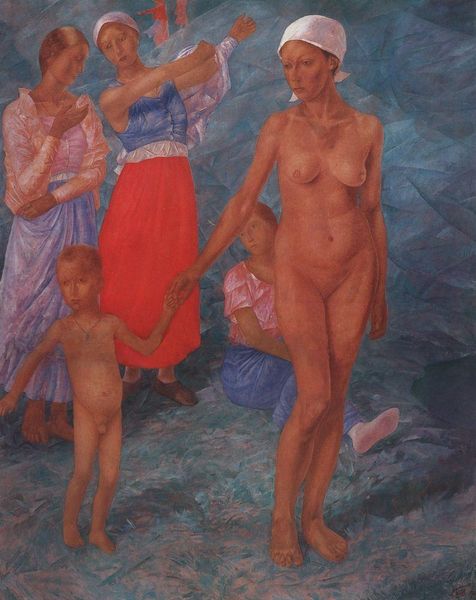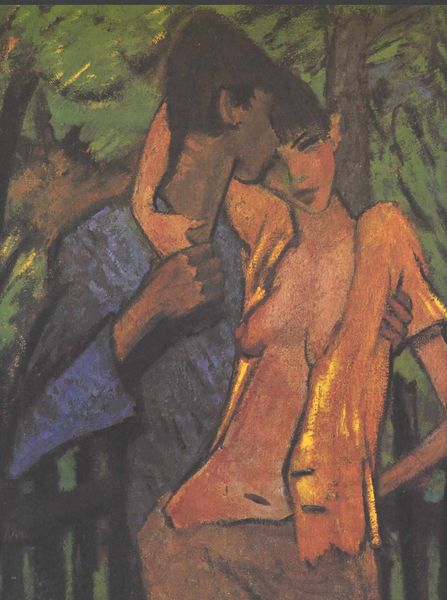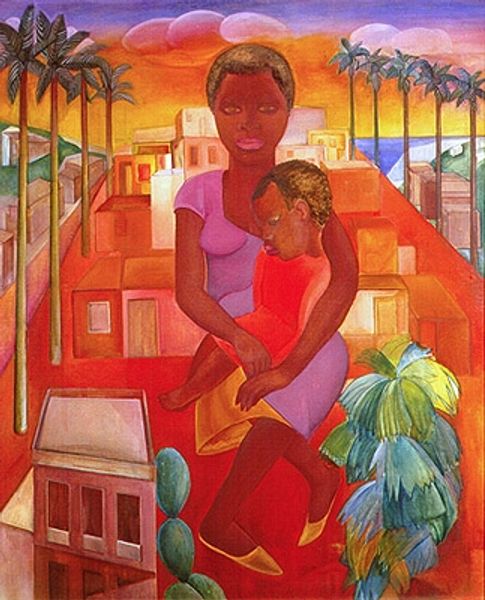
oil-paint, impasto
#
portrait
#
oil-paint
#
landscape
#
figuration
#
oil painting
#
impasto
#
portrait reference
#
group-portraits
#
orientalism
#
genre-painting
#
post-impressionism
#
female-portraits
Dimensions: 73 x 94 cm
Copyright: Public domain
Paul Gauguin painted “Three Tahitians” using oil on canvas, location and date unknown. Gauguin, like many European artists, was captivated by the idea of “primitive” cultures, viewing them as more authentic and less corrupted by modernity. In this painting, the women are depicted in a manner that is both idealized and exoticized. The male figure in the center of the composition turns his back to the viewer, this directs the viewer’s gaze to the women flanking him, who embody an idealized, sensual otherness. What does it mean when an artist, imbued with their cultural assumptions, attempts to represent another? Gauguin’s work raises questions about cultural appropriation, and the power dynamics inherent in representation. He once said, "I am escaping everything that is artificial and conventional. Here I am entering into the truth, nature." The image invites us to consider the artist’s longings, and the impact of colonialism on both the artist and his subjects. It remains a powerful, yet troubling, example of cross-cultural representation.
Comments
No comments
Be the first to comment and join the conversation on the ultimate creative platform.
